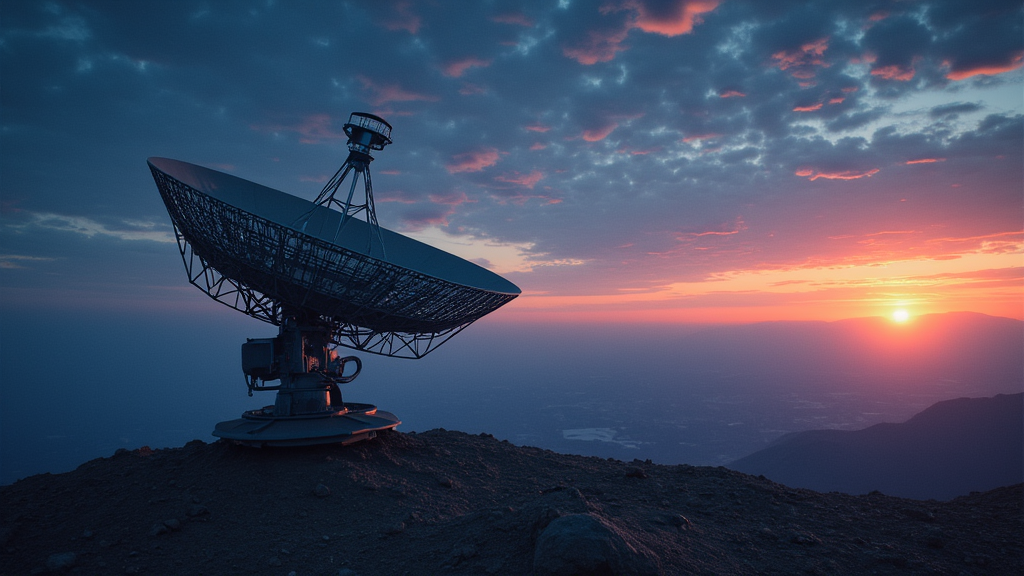Starlink Satellites: Revolutionizing Internet Connectivity and Bridging the Digital Divide
Estimated reading time: 10 minutes
Key Takeaways
- Starlink, developed by SpaceX, now operates over 6,000 satellites in low Earth orbit.
- Offers high-speed, low-latency internet to rural, remote, and mobile users worldwide.
- Transforms digital opportunity in education, disaster recovery, maritime, aviation, and more.
- Ongoing constellation upgrades (V2 Mini satellites) are increasing reliability and performance.
- Presents new regulatory, economic, and astronomical challenges alongside its technical revolution.
Table of Contents
1. Overview
In just a few years, Starlink has rocketed from a bold idea to a defining force in the way we access the internet. Developed by SpaceX, Starlink is a network of thousands of satellites working in tandem to deliver high-speed internet from space. By 2025, Starlink has established itself as a lifeline for remote communities, disrupted telecom monopolies, and expanded coverage across continents that traditional infrastructure rarely reached.
Why is Starlink such a game-changer? Unlike fiber or cellular networks, it isn’t tethered by land—making reliable connection possible from the streets of Hà Nội to the mountains of Colorado. Rural schools, disaster zones, ships in the Pacific Ocean, and even conflict regions have witnessed a transformation in how people access knowledge or coordinate under crisis.
Key facts at a glance:
– Over 6,000 Starlink satellites in low Earth orbit
– Service available in more than 60 countries as of 2025
– Hundreds of launches, with continuous constellation upgrades
– Millions of users worldwide, with demand growing
With this ambitious deployment, Starlink stands at the center of a digital revolution—reshaping not just the internet, but the very idea of global connectivity.
2. What is Starlink?
Starlink is SpaceX’s innovative answer to global internet gaps. Think of it as a blanket of satellites, each transmitting data directly to users on the ground through small, advanced terminals. It’s a constellation designed to provide fast, reliable broadband, particularly in places that previously lacked access—like rural mountains in Vietnam or isolated research stations in the Arctic.
Traditional satellite internet used a handful of high-orbit satellites, leading to slow speeds and long delays. Starlink, by comparison, positions its satellites much closer to Earth and in far greater numbers. This modern approach aims to deliver fiber-like connections and lower latency, making video calls, streaming, and online business practical almost everywhere.
SpaceX sums up the vision simply: “Deliver high-speed internet to locations where access has been unreliable, expensive, or completely unavailable.”
2.1 Who Founded and Operates Starlink?
- Founder: SpaceX
- Operator: SpaceX, with direct leadership from CEO Elon Musk
Elon Musk conceived Starlink in 2015 as a bold attempt to address persistent internet disparities. The first test satellites launched in 2018, with operational deployment quickly ramping up afterward. SpaceX’s vertical integration—building rockets, satellites, and ground systems—helped accelerate Starlink’s evolution, establishing it as a major player in global connectivity by 2025.
2.2 The Goal: Global High-Speed Internet Access
Starlink’s mission is clear: end the digital divide by offering fast internet connections everywhere on Earth.
This vision covers:
- Gigabit-class speeds—up to 220 Mbps for standard users (350 Mbps in optimal conditions)
- Coverage extending into remote, mountainous, or disaster-stricken regions, not just urban centers
- Easy-to-install terminals that work even in severe weather and without local cell towers
The result? Farmers in the Mekong Delta, relief workers after typhoons, and fledgling startups in rural America can all join the digital economy. As Musk stated, “Starlink is designed for the 3% hardest-to-reach places—where no one else will go.”
3. Structure and Technology
What powers this global mesh? Starlink’s satellites form orbital “grids,” working like a vast network of wireless routers in space. Data flows from your dish on the ground, beams upward to the nearest satellite, and then travels across the constellation via advanced inter-satellite lasers.
Core technology includes:
– Phased array antennas in user terminals, auto-tracking satellites in orbit
– Laser interlinks that let data leap from one satellite to another, bypassing ground infrastructure
– Ground stations connecting the network to the global internet backbone
Every user terminal (sometimes called a “dish,” or “Starlink Kit”) is designed to be self-installing, scanning the sky and staying locked on fast-moving satellites—ensuring steady, high-quality internet connections even as the satellites themselves zip overhead.
Image description for illustrative purposes: A flow diagram showing connections from user terminals to satellites, between satellites (via lasers), and from satellites to ground stations, culminating at the internet backbone.
3.1 Satellite Size, Weight, and Orbit Parameters
| Generation | Size | Weight (kg) | Orbit Altitude (km) |
|---|---|---|---|
| V1.0 | 2.8 × 1.4 m | ~260 | 550 |
| V2 Mini | 4.1 × 2.7 m | ~800 | 530–570 |
Starlink satellites operate in Low Earth Orbit (LEO)—typically 530–570 km above the planet (that’s roughly Hà Nội to Đà Nẵng, but straight up). Short orbital periods mean satellites cross the sky quickly, always passing data between one another to sustain seamless coverage.
3.2 Starlink v1 vs v2 Mini: What’s the Difference?
Key upgrades include:
- Enhanced laser interlinks: V2 Mini satellites connect directly in space, reducing dependency on ground relays
- Larger solar panels: Boosting power capacity and operational lifespan
- Higher throughput: Each V2 Mini can handle more users simultaneously, supporting even denser regions
- Software improvements: Smarter routing, traffic management, and updates sent directly from SpaceX
Pros and Cons Table:
| Feature | V1 | V2 Mini |
|---|---|---|
| Max Bandwidth | Lower | Higher |
| Laser Links | Limited | Standard |
| Power | Lower | Increased |
| Obsolescence | Quicker | Slower, upgradable |
Practically, this means Starlink is getting faster, more reliable, and ready for entirely new use cases every year.
3.3 Why Low Earth Orbit (LEO) is Crucial
LEO satellites orbit 500–600 km (about 311–373 miles) above Earth. Compared to traditional geostationary satellites at 36,000 km, Starlink satellites are much closer to users—shrinking data round-trips from half a second to under 50 milliseconds.
Advantages:
- Reduced latency: Online games, stock trading, and video calls all become possible
- Faster speeds: Shorter path = less signal loss, better bandwidth
- Broader coverage: Hundreds of satellites can serve overlapping areas, maintaining service if one goes offline
However, LEO means satellites move rapidly relative to the ground—so continuous handover and sophisticated tracking are vital to keep you connected.
4. Number and Launch History
Starlink’s journey is a saga of rapid scale:
- May 2019: First operational launches, 60 satellites at a time
- By 2022: Over 2,000 satellites in orbit
- 2023-2024: Constellation surged past 5,000, now supporting coverage in Africa, Asia, and the Pacific
- 2025 projection: Over 6,000 satellites deployed, aiming for 12,000+ in coming years
SpaceX’s relentless launch cadence—frequently 2–3 missions per week—made this expansion possible, far outpacing any previous commercial satellite program. Each new “shell” or orbital layer increases overlap, boosts capacity, and shores up global redundancy.
This unmatched growth has been pivotal for uniting disconnected communities and powering new digital services on land, sea, and air.
4.1 Recent Launch Schedule
- SpaceX launched more than 80 dedicated Starlink missions in 2024 alone
- Notable events: Milestone “Starlink 15-5” launch and the first expansion into South Asia
- Projected launches for upcoming quarters include further densification of Asia-Pacific and Africa
Expect ongoing weekly launches from California, Florida, and Vietnam’s regional downlink stations.
4.2 The Falcon 9: Starlink’s Workhorse Rocket
The backbone of Starlink deployments is the Falcon 9 rocket. This partially reusable vehicle is a technological marvel:
- Deploys 50–60 Starlink satellites per launch
- Reusability: Each booster can fly 10+ times, slashing costs
- Rapid launch cycles: Sometimes reused within a week
By recycling boosters and optimizing ground operations, SpaceX has drastically reduced the price per satellite—enabling a truly global, scalable constellation.
5. Practical Applications
- Rural connectivity: Farms in Đồng Tháp, Colorado ranches, and rural African villages now have fast internet
- Emergency responses: Starlink kits flew into hurricane-hit Puerto Rico and typhoon-affected Central Vietnam within days
- Maritime and aviation: Deployed on ships crossing the Pacific, planes linking Hà Nội and San Francisco, and research vessels near Antarctica
- Military and security: Used in Ukraine for secure comms under wartime disruptions
Typical user experience:
– Download speeds: 70–220 Mbps (peak speeds in Vietnam: 180 Mbps)
– Uploads: 15–35 Mbps
– Latency: 25–50 milliseconds—enabling video calls, trading, gaming
How to join?
Users order the “Starlink Kit” (automatic motorized dish, modem, Wi-Fi router) directly from Starlink.com or certified partners. As of 2025, prices are:
- Hardware: $399–$599 (discounted for some regions)
- Monthly subscription: $95–$120 USD
- Plan options: standard residential, RV/mobile, maritime, aviation, and enterprise with prioritized service
No landline required, no contracts, and setup completes in minutes.
6. Benefits and Drawbacks
Benefits
- Delivers high-speed internet to any global location
- Independent from cables, towers, or land-based infrastructure
- Especially valuable for emergencies and rapid deployment
- Offers resilience for businesses, militaries, and governments
- Enables new digital businesses and tele-education in remote regions
Drawbacks
- Light pollution and interference with astronomical research
- Risks adding to space debris if satellites aren’t carefully deorbited
- Service is pricier than some local broadband options
- Heavy storms and rain can degrade performance
- Legal and regulatory obstacles in controlled or restricted nations
7. Global Impact
- Geopolitical role:
During the Ukraine conflict, Starlink enabled communications despite attacks on local infrastructure—becoming a strategic asset for both military and humanitarian efforts. - Disrupting ISPs:
Traditional telecoms and fiber providers feel the pressure: customers now have a credible alternative, bringing down prices while improving rural access. - Regulatory responses:
Some nations have hesitated, citing national security or spectrum management (India, China, parts of the EU). Meanwhile, others (Vietnam, Nigeria, Brazil) have fast-tracked licensing, viewing Starlink as a vehicle for economic growth. - Scientific community:
Astronomers raised alarms about light pollution, prompting SpaceX to adopt anti-reflective coatings and satellite “dimming” maneuvers.
Starlink reflects the intersection of science, technology, regulation, and society—with benefits and trade-offs shaping the future of global networks.
8. Latest Updates (2025)
Recent launches (Q1–Q2 2025):
– Starlink 15-5: Expanded coverage in Southeast Asia
– First dedicated “maritime” and “aviation” mission for Vietnam Airlines
– V2 Mini upgrades delivered at scale
Newly approved/expanded markets:
– Vietnam, Indonesia, Peru, Nigeria, Saudi Arabia, and parts of Eastern Europe
– Major focus on underconnected regions—targeting a billion new potential users
Next-generation services:
– “Direct-to-mobile” satellite connectivity now in beta
– Rollout of high-priority plans for hospitals, government, and research vessels
– Starlink Maritime: seamless internet for global shipping lanes
Starlink in 2025 is not slowing down—in fact, global adoption is gearing up to reach entire nations by the end of the decade.
9. Supplemental Content: Key Questions and Comparisons
Can anyone get Starlink anywhere?
Not quite—licensed in most countries now, but government regulations or technical limitations still prevent access in Cuba, China, and a few others.
How does pricing compare?
Starlink is pricier than urban fiber or cable but much cheaper than legacy satellite internet. It’s often the only choice in remote or high-mobility situations.
Are there data caps?
Residential plans offer “unlimited” data with fair use management—bandwidth may be deprioritized after high monthly usage (over 1 TB), but no hard cutoffs.
Is Starlink affected by weather or solar storms?
Heavy rain or solar storms can cause brief slowdowns or outages, though most users see stable connections in typical conditions.
What regulations apply?
Each country sets its own rules on satellite frequencies, import/export, and ISP licensing. Starlink is actively working with international regulators for broader approvals.
10. Further Resources and References
- SpaceX Starlink Official Site
- NASA Starlink Facts
- FCC Reports on Satellite Internet
- Global Coverage Map
- Technical Whitepaper: Starlink Architecture
- Major News Outlets: BBC, Reuters, CNBC (Starlink News 2025)
Whether you’re a startup founder, technology leader, or remote learner, Starlink’s global network is shaping how we connect, compete, and innovate in a digital-first world. Have questions? Dive deeper with the links above, or subscribe for ongoing updates from Citipen’s team of science and innovation experts.
}



